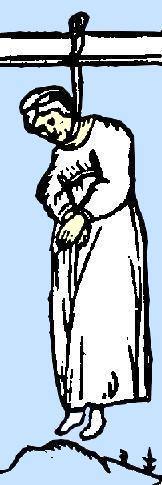
Rose Cullender was not a native of Lowestoft. She first appears in the town records as Rose Hicks, singlewoman when she married William Cullender, occupation unknown, on 18th April, 1625. This is also the first reference to her husband, nothing is known about either of them before this date.
When Rose walked up the aisle of St. Margarets Church, Lowestoft she was six months pregnant. Her first child, Elizabeth, was baptised at the same church on 24 June.
Over the next twelve years Rose and William produced another eight offspring:
Thomas (born in 1627), Susan (born in 1629), William (born in 1630), Peter and Mary (twins - born in 1632), Bridget (born in 1634), Mary (born in 1635) and another Mary (born in 1637). Of these children 5 died before reaching the age of 10; four of them during a period of plague in 1635/36.
Soon after their marriage Rose and William moved into a tenement at the western end of Old Blue Anchor Lane (now Dukes Head Street) in Lowestoft - which was part of a large sub-divided property formerly called "The Hall House". Adjacent, and forming part of the same property, was a barn and yard used by a brewer named Francis Ewen. Ewen had a number of children amongst whom was Anne, a teenager in the 1630's who, as Ann Landefielde, was one of the main witnesses against Rose at her trial.
Also close by in Old Blue Anchor Lane was a tavern called "The Sun" this was owned by John Soan, another principal witness at the trial.
In January 1638 a certain Richard Church of Lowestoft mortgaged his house in Swan Lane, Lowestoft, to Rose's husband. Three years late the Cullender's purchased the house from Church and it became their new home.
However, within a year William Cullender was dead. The details of his death are unclear. Roses's eldest son, Thomas, was only 14 years old and too young in inherit the property and as there was no Will, Rose could not inherit in her own right! Although there is no evidence in the Lowestoft Manor Court records it seems that the property was placed in Trust for young Thomas until he reached his majority.
There is no record of the burial of William Cullender at Lowestoft and so his final resting place is not known.
Rose Cullender was still living in this house (now owned by her son Thomas) when she was arrested as a witch in 1662 - and it was there that she was stripped and searched for "witches marks". At the time she had two surviving children - Thomas (aged 35) and Susan (aged 33). Susan, who never married, was probably still living at home and caring for her aging mother in their Swan Lane abode. The date of Rose Cullender's birth is not known, but assuming that when she married William in 1625 she was at the "average" age of marriage during this period, i.e.., about 25, then she would have been approximately 62 years old when she was tried and executed at Bury St. Edmunds.
Rose was also a grandmother to Bethia and Samuel Cullender, the children of her son Thomas.
In October 1662, seven months after his mother's untimely death, Thomas transferred the Swan Lane house into his sister Susan's name. It remained hers until her death in 1688. Thomas died at Lowestoft and was buried there on 8 February 1676 aged 49.
Susan, Rose Cullender's last surviving child, died intestate in 1688 aged 59. She had no heirs and the ownership of the Swan Lane property reverted to her niece Bethia Fox, the surviving child of her brother Thomas. On the day that she inherited the house Bethia immediately sold it on . . . . . The building was demolished in the early 1960's when the area was redeveloped. . . . and the last trace of the Cullenders disappeared . . . An apartment block now stands on the site.
Rose Cullender differs somewhat from other victims of witchcraft accusations, for she does not fit into the usual model of an accused woman. She and her husband had some money and property, and the family were probably reasonably well off. Even after the death of her husband Rose was making regular contributions to the "Poor Rate" in Lowestoft, rather than receiving handouts from it.
Alas, we will probably never know what made her fellow townsfolk accuse her of being a witch . . .
Sources:
Lowestoft Parish Registers (1561 - 1720) - Suffolk Record Office Lowestoft.
Lowestoft Manor Court Books - Suffolk Record Office, Lowestoft [194/A10/7].
Miscellaneous documents at the Suffolk Record Office, Lowestoft and Ipswich.
David Butcher, The Development of Pre-Industrial Lowestoft. 1560 - 1730. M.Phil Thesis, University of East Anglia, Norwich. 1991
